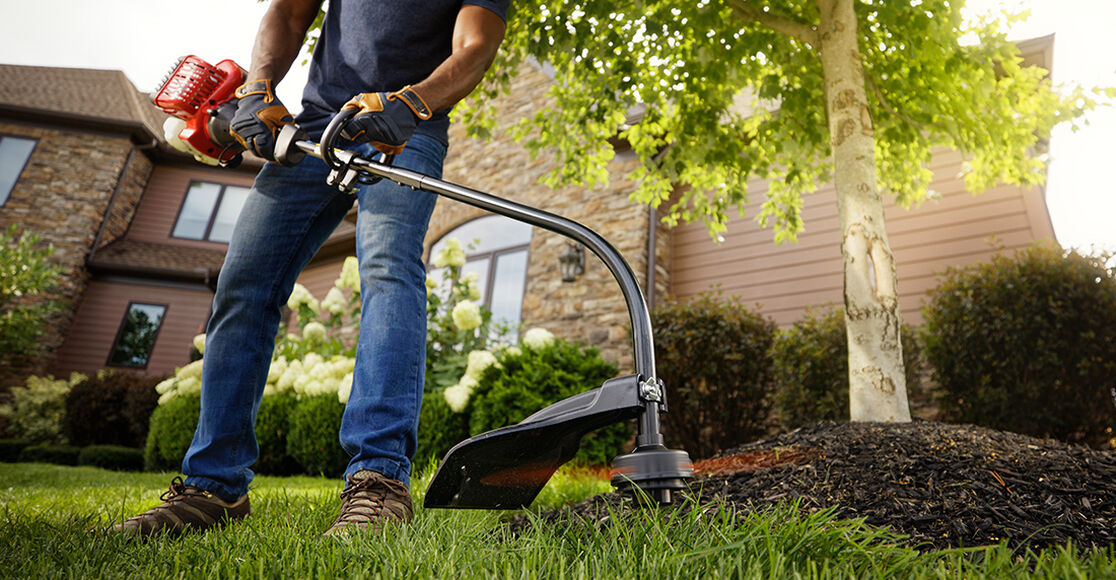A string trimmer is an essential part of your tool shed because it can tackle many different yard projects. And like any piece of equipment, it’s important to perform regular maintenance to make sure it’s running smoothly throughout the season. Read our maintenance tips below to ensure proper string trimmer tune-up and troubleshoot equipment if necessary.
Make sure to keep a few routine tasks on your radar to ensure one of your most versatile tools is there for you when a walkway becomes unruly or hard-to-reach grass needs to be trimmed. Also keep the owner’s manual that came with your string trimmer handy. In addition to valuable safety and operating instructions, it also comes with a suggested maintenance schedule for your model. If you can’t locate the manual that came with your trimmer, you may be able to find it online. You can download operator’s manuals for Troy-Bilt string trimmers under the “Specs & Maintenance” section of each model’s product page at Troybilt.com.
Before you get started – or if you forgot at the start of the season - check the string trimmer engine’s spark plug, fuel filter and air filter to make sure each of these parts is still running optimally. Replace if needed.
You’ll also want to note which kind of gas engine powers your string trimmer and keep the right kind of fuel on hand throughout the season. A 2-cycle trimmer model, like the TB22 Curved Shaft String Trimmer, requires the mixing of oil and gas, so you’ll need to store it in a separate fuel container for your trimmer. An engineered, pre-mixed fuel like TruFuel® is a good choice for 2-cycle engines because it provides timesaving convenience, improved engine health and performance. However, 4-cycle trimmers, like the TB304S Straight Shaft String Trimmer, use gasoline like your tractor or lawn mower. The oil for lubrication is in a separate reservoir.
Be sure to use proper trimming techniques to minimize wear to your string trimmer. When cutting tall grass, begin trimming from the top down to prevent the string from getting tangled in the grass blades. When tackling bigger trimming jobs, start trimming in small sections rather than the whole yard all at once to prevent your tool from stalling or string from tangling.
Check to see in what direction your string trimmer is rotating. If the strings in your trimmer rotate counterclockwise, it cuts to the right and will discharge chopped material and debris from the left side of the trimmer. To prevent this material from building up in your cutting path, keep your body toward the cutting side.
Finally, make sure you know what kind of engine your string trimmer uses and follow the proper starting techniques. And never forget about safety. When trimming, remember to wear long pants, closed-toed shoes and safety goggles to protect yourself from flying debris.
Keeping up with these simple tips will have you ready to tackle any trimming task.
